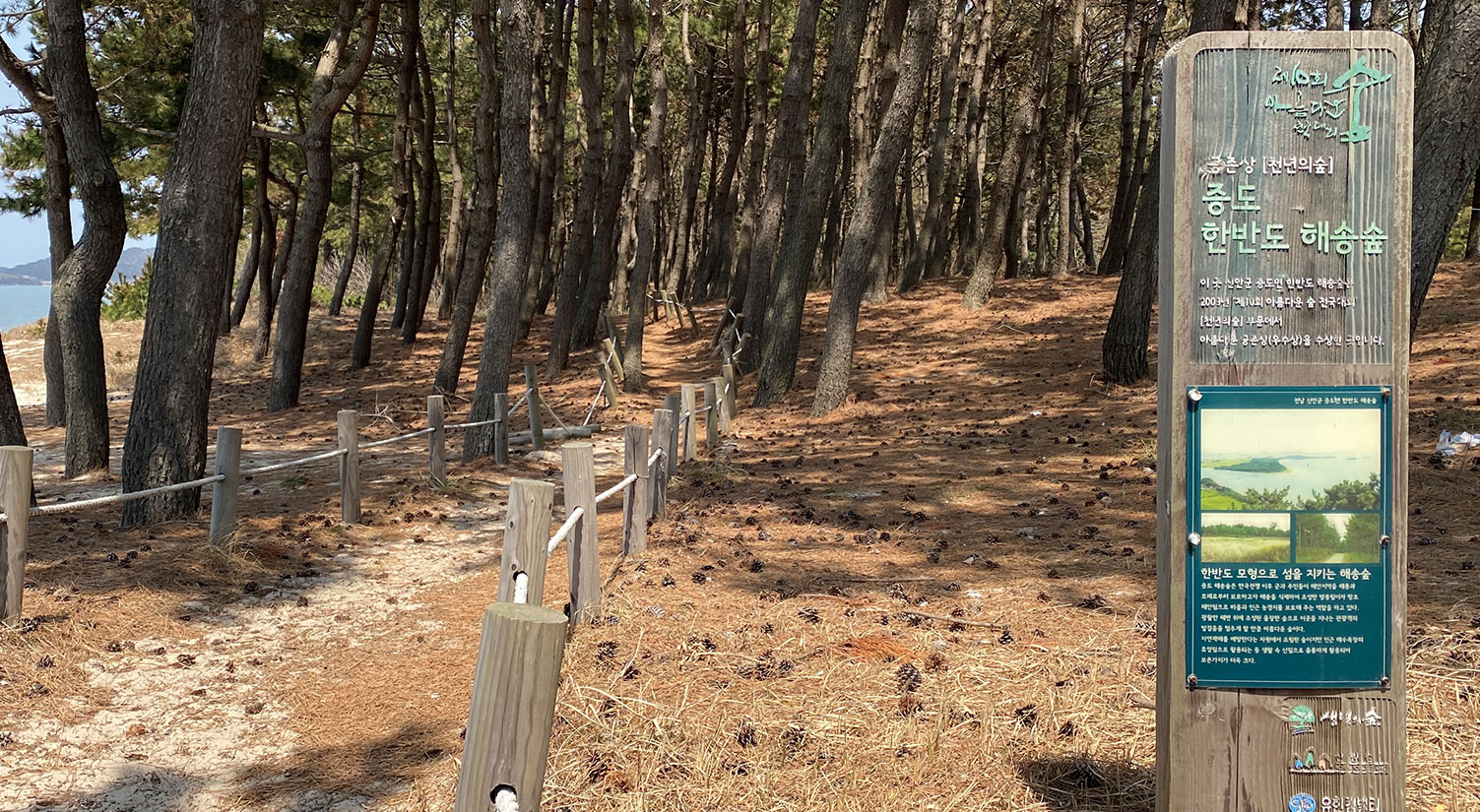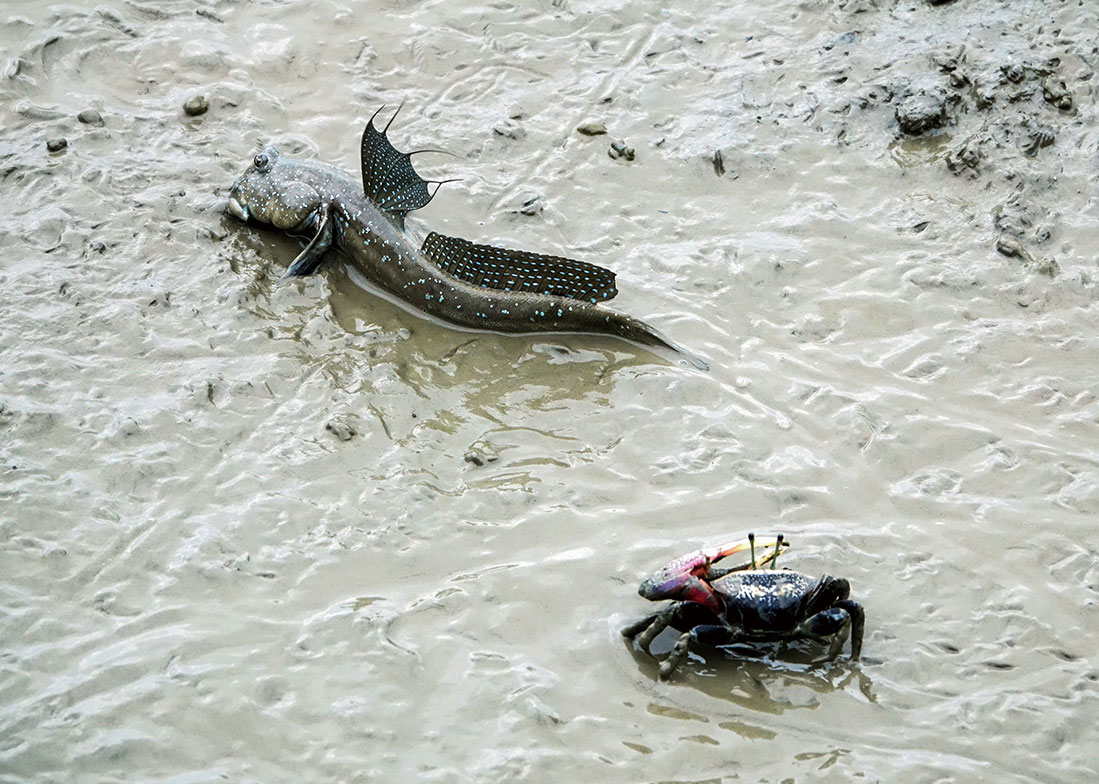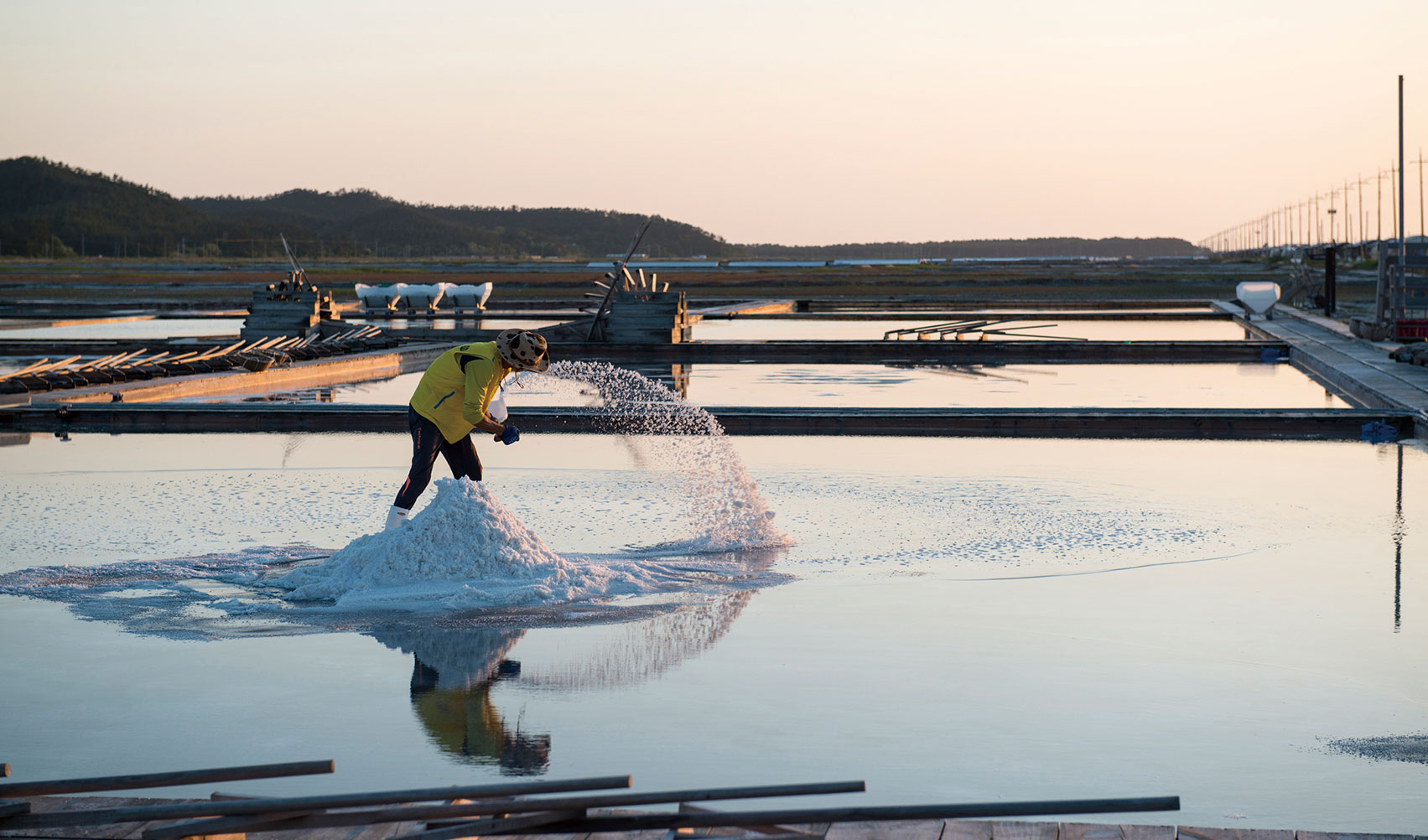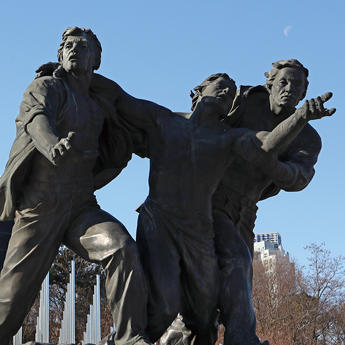Travel
Cycling Sea-nery
Sinan Jeungdo Island Bike Trail
In 1976, a treasure-filled submarine relic was scooped up on Jeungdo Island, a wondrous seaside destination of mud and salt flats in Sinan-gun County, Jeollanam-do Province. Included on CNN Travel’s list of the 50 most beautiful places to visit in Korea, the island has breezy, unsullied air excellent for bicyclists to savor its wondrous scenery and views.
Written & photographed by • Cho Yongsik
A cycling journey on Jeungdo Island starts from riding on the orange arched Jeungdodaegyo Bridge. Across the bridge, the tourist information desk greets the start of a bike trail. Grab a simple brochure and head right toward Jidojeungdo-ro, a road that spans the beautiful tidal flats of the Yellow Sea.
Another prominent feature of the island is doksal, a traditional fishing method using the tides to trap fish using bamboo or stone-stacked barricades. On Jeungdo, the mudflats are aligned with stretches of bamboo doksal installations.
About 11 km farther on the seaside road leads to the Bicycle Certification Center, the site of the Marine Archeology Monuments. An inscription on one monument says, “Marine archeology commenced in January 1976 when a fisherman reported finding ceramics in his fishnet.” Celadon and porcelain were among the 20,000 kinds of ceramic ware scooped up from the Chinese Yuan Dynasty. These invaluable archeological relics used for commerce by Korea, China and Japan are said to have led to the finding of ancient trade routes in the 14th century.
Across the monuments, the Marine Archeology Exhibition is housed in a ship to commemorate the discovery. The exhibition hall displays ceramics and photographs, and the second-floor exhibition outside is a rest area fashioned like a ship’s deck.
The island has breezy, unsullied air excellent for bicyclists
to savor its wondrous scenery and views.

The Marine Archeology Exhibition is on a ship to represent the vessel scooped up during an archeological discovery made in 1976.
‘Mudskipper’ Bridge
Down Bomulseom-gil Road from the monuments is a small, sandy beach from where the ocean is seen dotted with uninhabited islands that flicker while cycling forth. As marked at the center of the road, bicycles are given priority in passing over other vehicles, which rarely do so. Lacing the road are palm trees planted about a meter apart. The end of the seaside road, complete with a view of the mudflats, leads to the Jjangttungeodari (Mudskipper) Bridge.
The bridge is a signature locale of Jeungdo. Once the waters empty from the mudflats into the floating wooden bridge, diverse coastal organisms appear like mudskippers, sand crabs and ghost crabs. Across the bridge are the beaches of Jjangttungeo (Mudskipper) and Ujeon. The sun drops at the bridge's arched midsection to form a fantastic twilight view. Because the bridge is too narrow to cycle through, especially because of passersby, bikers should get off and walk their bicycles across. Observatory decks stationed throughout the bridge also serve as prime spots for photos.
Jjangttungeo lays at the end of the bridge and is adjacent to Ujeon. The former beach is named after the bridge, though differentiated by its own remarkable traits of the ocean view dotted with islands of various sizes plus exotic parasols kneaded with straw and bushclover wood. Tall bamboo doksal installations unfold in the backdrop, laying out a photogenic panorama.

Parasols made from straw and bush clover align the white sands of Jjangttungeo (Mudskipper) Beach.
Beachside Attractions

Hanbando Haesongsup (Korean Peninsula Coulter Pine) Forest connects the beaches of Jjangttungeo (Mudskipper) and Ujeon.
After wheeling along the beach, the tranquility of the forest trail and sandy beach appeals to all who go there. Hanbando Haesongsup (Korean Peninsula Coulter Pine) Forest spans from both beaches. Walking on the pine tree-lined trail is a festival of the sounds of nature like chirping birds, sloshing waves and a whistling breeze. Pine’s phytoncide is also said to have a freshening effect on the body.
Stretching 4 km in length and 100 meters in width, Ujeon is a popular site for wedding photoshoots. Its soft, silvery sand – a rarity in the Yellow Sea region – brought about its nickname of the “Bali of Korea.” Parasols and the forest are also great for camping. Further into Ujeon are Sinan Mud Flat Center and Slow City Center. In the front yard of the two centers is a blue container box with bicycles available for free rental during summer only.
And 4.2 km from the mudflat center is Hwado Nodu-gil, known for its mysterious beach trail. An island within an island, Hwado Island becomes an island at high tide and land at low tide. To accommodate vehicles, an asphalt road leads toward it. At low tide, mudflats appear on the peripheries of Hwado, where sand crabs and mudskippers can be spotted. Seo Sanghyun, the cultural tourism commentator of Sinan-gun, calls the place a “great spot for eclectic and memorable experiences” where “you can cross the Nodu-gil Trail, knee-deep in the sea, if your timing is right.”

Inhabitants of the mudflat include the mudskipper and the sand crab.
Taepyung Salt Farm
Taepyung Salt Farm stretches all the way to the foot of a distant mountain. It reaches the end of the Jjangttungeodari Bridge, and the adjoined islands form solar salt farms. After the Korean War ended in 1953, displaced people in need of refuge teamed up to form the nation’s largest salt farm structure. To this day, salt is sun-dried on these solar farms the way they were 67 years ago.

Taepyung Salt Farm maintains the traditional production methods of sun-dried salt.
At the farm’s entrance is a decked walkway and gazebo, around which spans the Taepyeong Yeomsaeng (Pacific Halophyte) Botanical Garden. The farm’s general manager Park Jong-hwa said, “Photographers and visitors frequent the garden every May for lush seepweed and saltwort accentuated by white hues of cogongrass.”
Next to the farm is the Salt Gallery (Modern Cultural Heritage No. 361), housed in what was a stone salt warehouse. The gallery is trove of information on salt, including the nutritional benefits of sun–drying. At the exit, a salt-flavored ice cream stall offers a savory delicacy for those with sweet teeth. And Grass Park across the street features 12 colorful wooden benches inscribed with playful sayings.





















